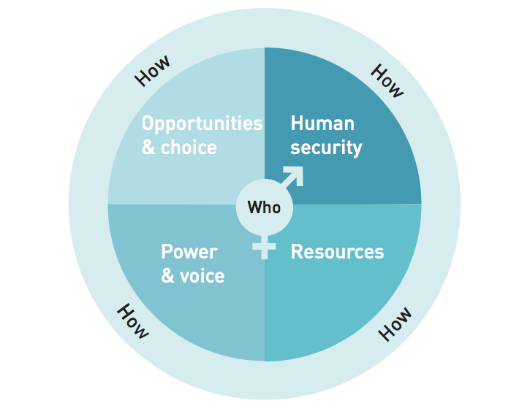Background
With the growth of the economy and the failure of employment, the number of people living in poverty and without shelter increases. Poverty refers to the lack of financial resources to meet basic human needs such as clothing, shelter, and food.
However, in many cases, poverty is much more than not having enough money; it is about having no prospects, no access to education and employment, and healthcare. Homelessness goes hand-in-hand with poverty and is extremely isolating and dangerous for those who do not have shelter. There are multiple causes of both poverty and homelessness, and understanding the impact and the scope of the issues will further the discussion and reveal effective measures of dealing with the problem.
Main body
The dimensions of poverty can be divided into socioeconomic, contextual, and demographic, which points to the multi-faceted nature of the problems. In a general view, models illustrating the dimensions of poverty and homelessness include such dimensions as opportunities and choice, human security, resources, and power and voice (see Figure 1).

From the socio-economic perspective, the dimensions of poverty and homelessness include the lack of education, unemployment, discrimination (cultural and religious), as well as overpopulation. These dimensions apply to both the United States and the world and represent a range of challenges with which individuals in poverty deal on a regular basis. From the demographic perspective, the dimensions of poverty and homelessness are attributed to the number of individuals who are more likely to live in unsatisfactory conditions.
For example, in the United States, the rate of poverty decreased between 2016 and 2017 from 12.7% to 12.3% (“U.S. poverty statistics,” 2018). However, over the past three decades, it remained static with an average percentage of 13.4% (“U.S. poverty statistics,” 2018). Black Americans had the highest rate of poverty, reaching 21% in 2017 (“U.S. poverty statistics,” 2018). Asian Americans were less likely to experience poverty, with their rate being lower than 10% in 2017 (“U.S. poverty statistics,” 2018).
As demographics also imply the age of the population, it is imperative to mention that American citizens aged under 18 years have the highest poverty rate of 17.5% (“U.S. poverty statistics,” 2018). Globally, the population of Sub-Saharan Africa lives in extreme poverty, suggesting that non-white populations are more likely to struggle with a poor quality of life.
In terms of homelessness, geographical location plays a significant role. Thus, in the United States, the District of Columbia and the State of New York have the highest rate of homelessness. However, the rate of Americans living without homes increased nationwide by 0.7% between 2016 and 2017 (National Alliance to End Homelessness, 2018). The highest increases of homelessness were witnessed in such a demographic group as unaccompanied children and young adults (14.3%), which aligns with the statistics on poverty. Therefore, young adults are the most vulnerable to both homelessness and poverty.
Contextually, the dimensions of poverty and homelessness are attributed to environmental factors, cultural considerations, climate, wellbeing, and developmental stages (OECD, 2013). Thus, in countries with the lack of available public services to guarantee the provision of necessary accommodations and support of populations in need, the rates of homelessness and poverty will be higher. The relationships between poverty and the environment have been close as the lack of resources accessible to the public puts stress on the environment while extreme environmental issues cause significant suffering to the poor (Bharadwaj, 2016).
Environmental complications can prevent individuals from accessing good and hygienic standards of living, especially since poor populations rely on the environment more directly than the rich ones (Bharadwaj, 2016). Cultural diversity should also be considered as a dimension of both poverty and homelessness. In addition, services for the homeless and impoverished are not always appropriate for individuals from diverse backgrounds (Lamont & Small, 2010).
Due to some Muslim traditions, finding common accommodations for both men and women of this culture may be impossible. In the United States, immigrants experience high levels of poverty and homelessness because of stereotyping and them not being qualified for the range of services.
Theories of Social and Cultural Constructions of Poverty and Homelessness
For decades, the most prominent theory in regards to this issue was Lewis’ notion of the culture of poverty, which suggested that “culture emerged when groups that were socially and economically marginalized from a capitalist society developed patterns of behavior to deal with their low status” (Lamont & Small, 2010, p. 170). The scholar observed such behaviors in Mexico and Puerto Rico and they were characterized by the lack of aspirations, general disorganization, helplessness, and the opposition to so-called middle-class values.
A theory that explores the social aspect of poverty and homelessness is the Restricted Opportunity Theory introduced by Schiller. It argues that poor people cannot avoid poverty due to the lack of suitable and abundant social services and economic opportunities (Bradshaw, 2006). Thus, the absence of opportunities is the key barrier preventing populations from living the life they expect and deserve. Overall, issues of poverty and homelessness remain unaddressed on a global scale, with more substantial efforts needed to eliminate the range of persistent challenges that communities face today.
References
Bharadwaj, N. (2016). The relationship between poverty and the environment.
Bradshaw, T. (2006). Theories of poverty and anti-poverty programs in community development. Web.
Lamont, M., & Small, M. (2010). Cultural diversity and anti-poverty policy.
National Alliance to End Homelessness. (2018). State of homelessness. Web.
OECD. (2013). Development co-operation report 2013: Ending poverty.
Sida. (2017). Dimensions of poverty. Sida’s conceptual framework. Web.
U.S. poverty statistics. (2018).